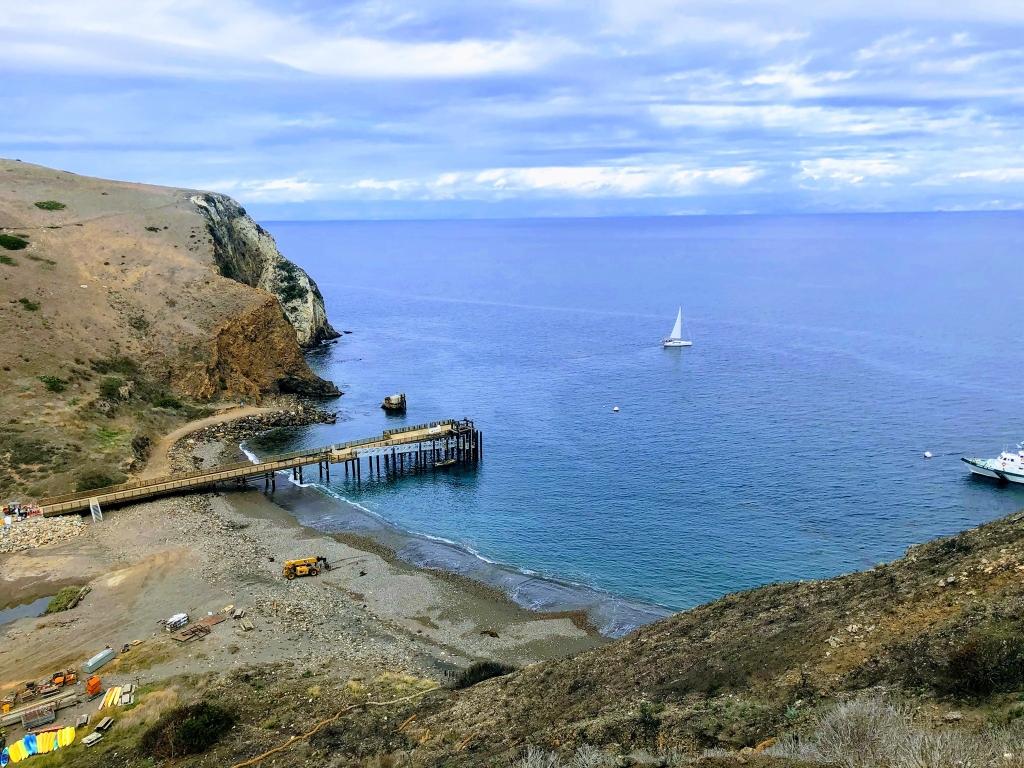
Visitors must step from the boat to a platform on the pier at Scorpion Anchorage. When the piers are closed, landings are via skiff onto the beach.
Historical Information
Prior to the construction of the first pier at Scorpion Harbor, small boats, or "lighters," were used to offload supplies. According to John Gherini in his book Santa Cruz Island: A History of Conflict and Diversity (p. 103), "The freight was unloaded onto a pontoon, and a heavy rope ran from the schooner to a deadman on the beach. The crew working on the pontoon would guide it to shore as a team of horses on the beach would pull the lighter ashore."
Eventually a pier was constructed in the center of the beach at Scorpion Harbor in the early 1930s, using the thick trunks of eucalyptus trees as pilings for the wharf. "With a pier in place," states Gherini, "ranch hands herded the sheep (about 1,000 to 1,500 annually) onto the rickety wharf, through the wooden corrals and into the loading chute which hung precariously over the side of the pier. The sheep often leaped from the chute onto the boat which frequently moved with the surging currents. The boat, loaded with sheep, sailed for Santa Barbara with deckhands moving among the packed sheep and lifting up the animals who had fallen to prevent them from suffocating. The trip ended at Stearns Wharf where the sheep were off-loaded. In later years, the boats cruised down to Port Hueneme in Ventura County, which was better equipped to handle livestock. From the mainland ports, the sheep were moved into waiting trucks and driven to the livestock yards and slaughtered for meat."
After this first pier was destroyed by winter storms, Pier Gherini constructed a combination concrete and wood wharf in 1938 and, later, a steel pier was erected in 1966. Violent winter storms destroyed the wharves, no matter what the design. In summer 1999, the National Park Service took its turn at building a pier. A concrete abutment was constructed on the shore and a flatbed railroad car was laid down, connecting the new abutment to the historic concrete block. Unfortunately, this too was damaged by winter storms in 2015. In 2016, the flatbed railcar was replaced with an elevated aluminum gangway. as a short-term solution.
In 2021, the construction of a new pier was completed. The new pier improved the safety and efficiency of loading and offloading passengers and cargo with a gangway for landing visitors and more reliable access during low tide conditions. It is located about 300 feet to the south of the existing landing and is longer, wider, and higher. It measures at 18 feet wide by 300 feet long and is supported by steel piles and a superstructure designed to handle storm events and wave action.
Is there something we missed for this itinerary?
Itineraries across USA


















































